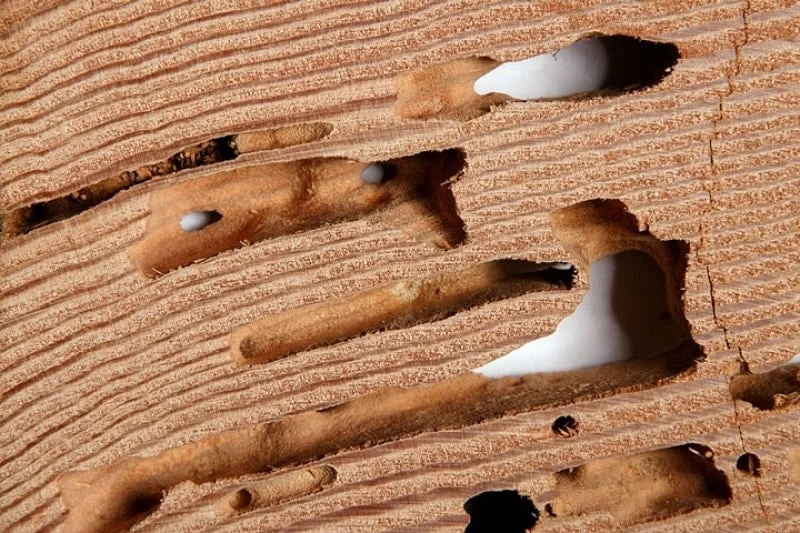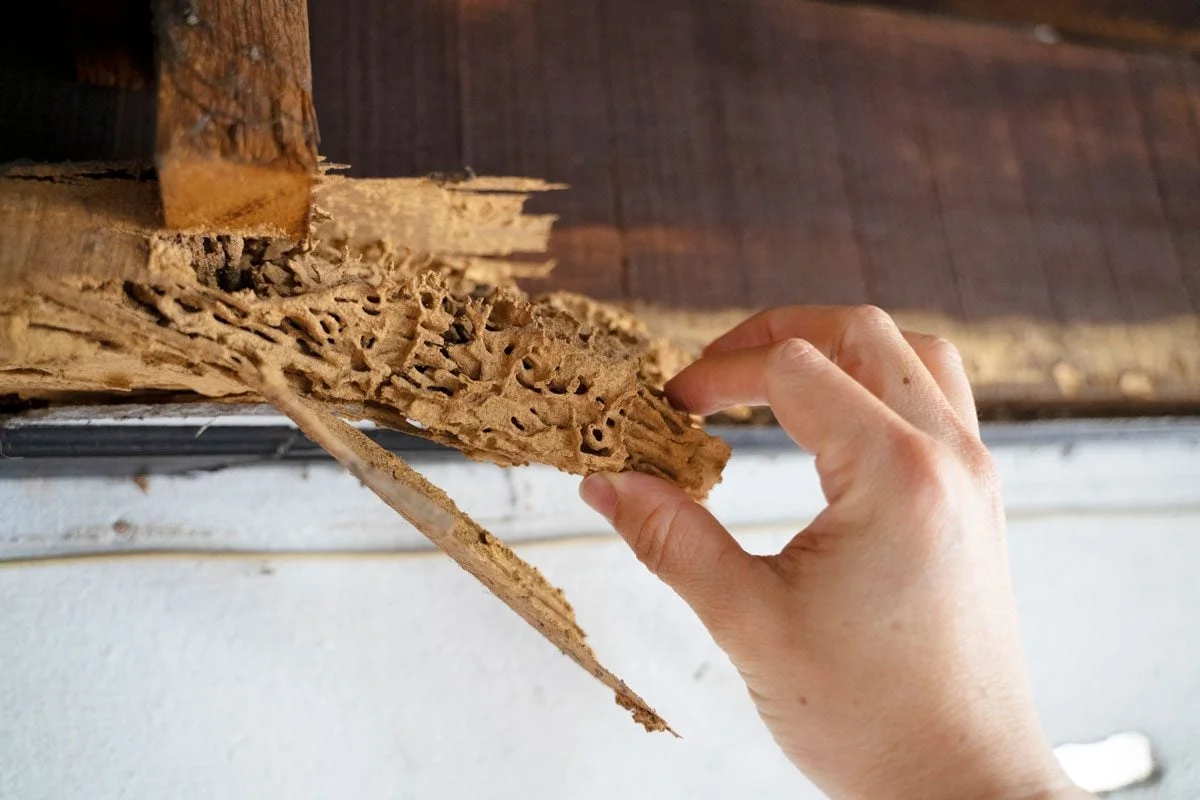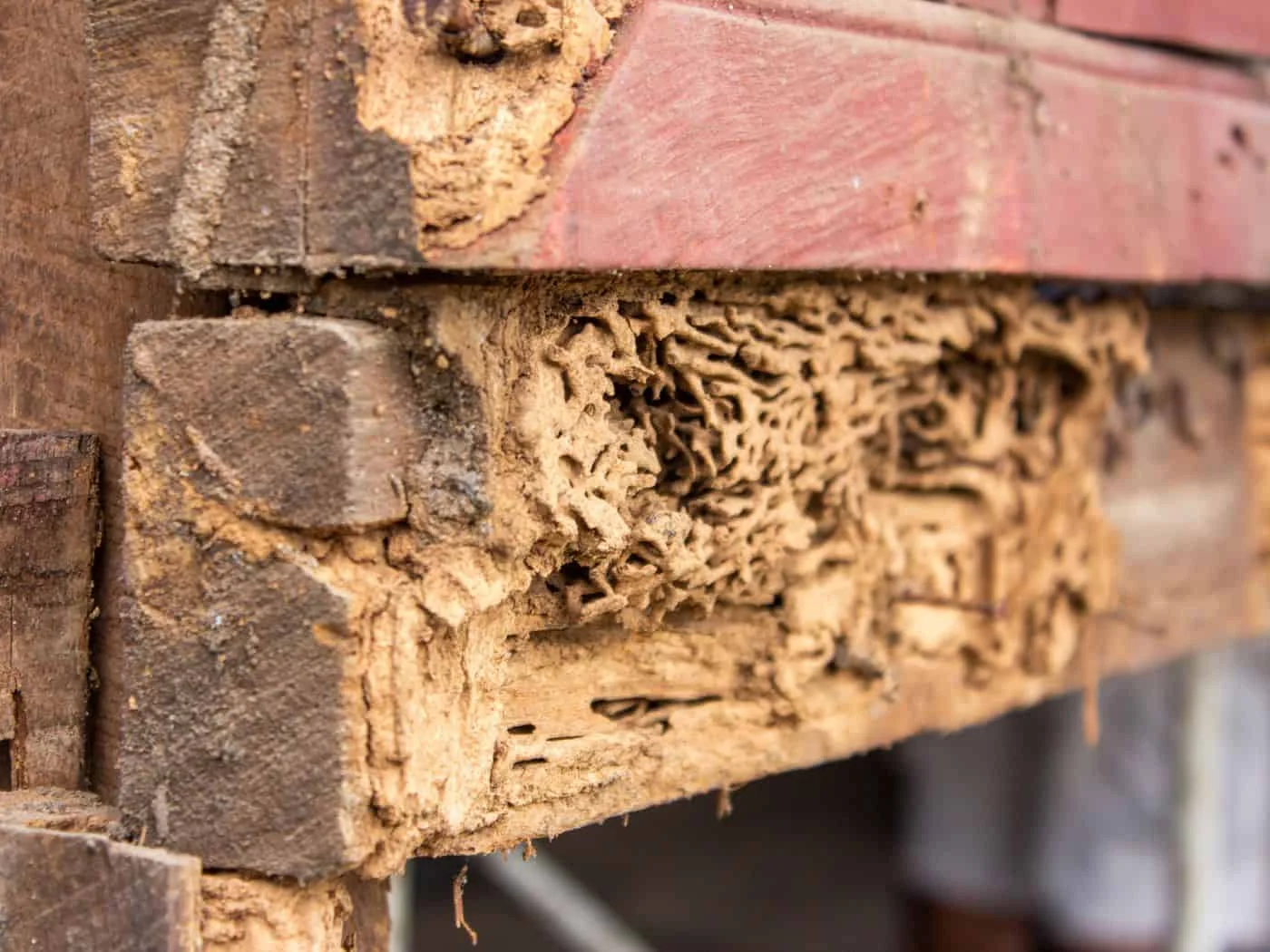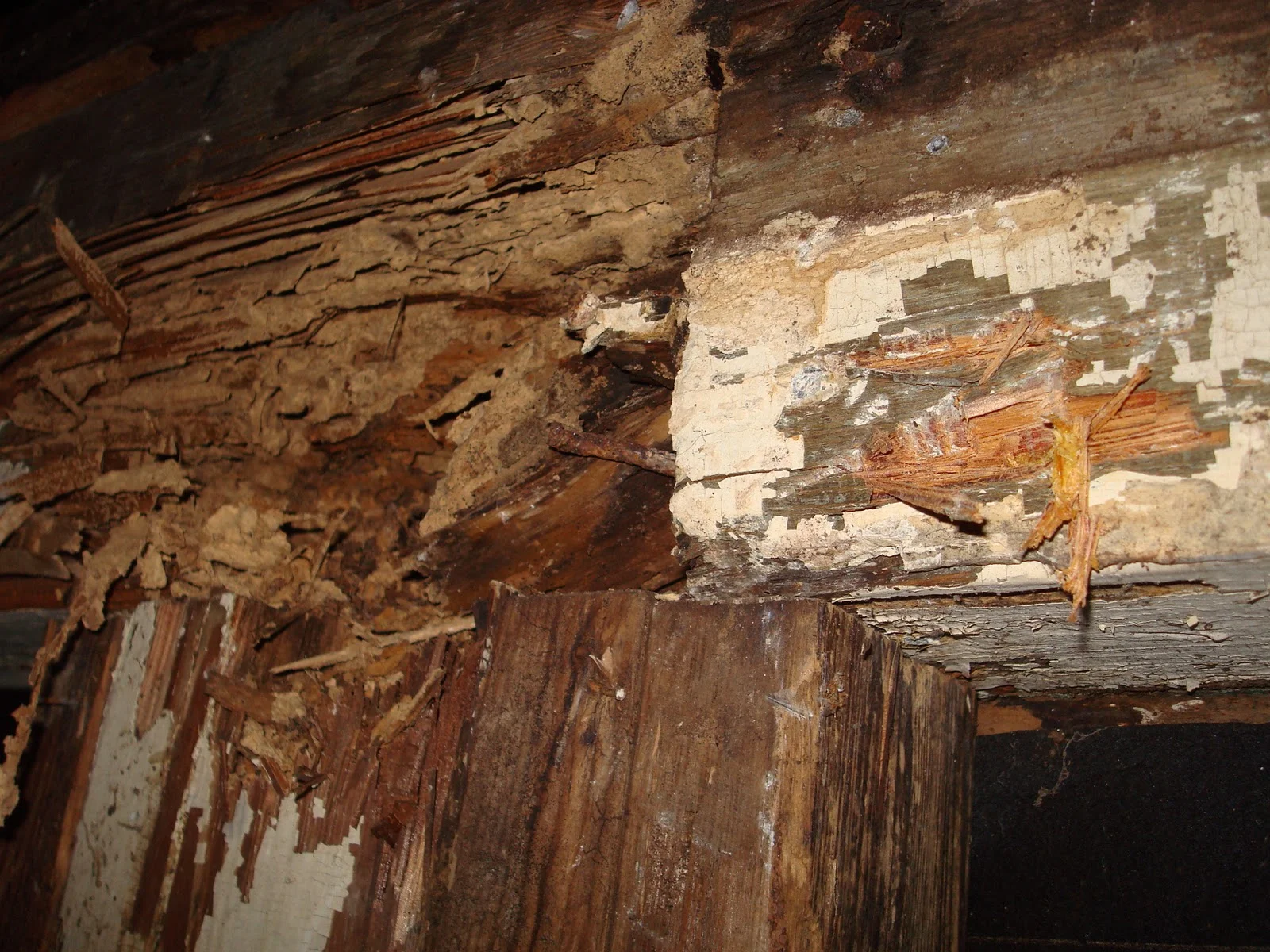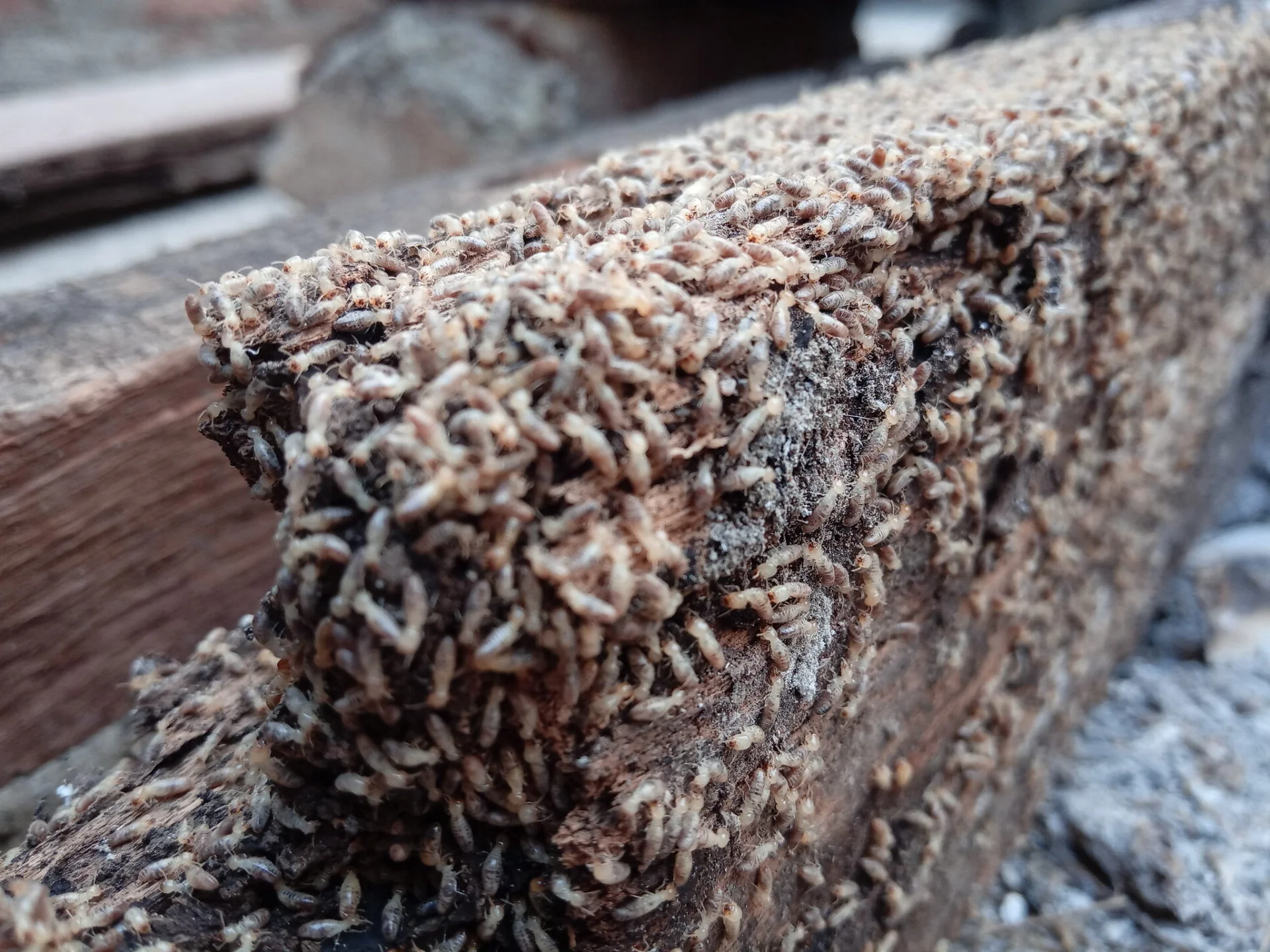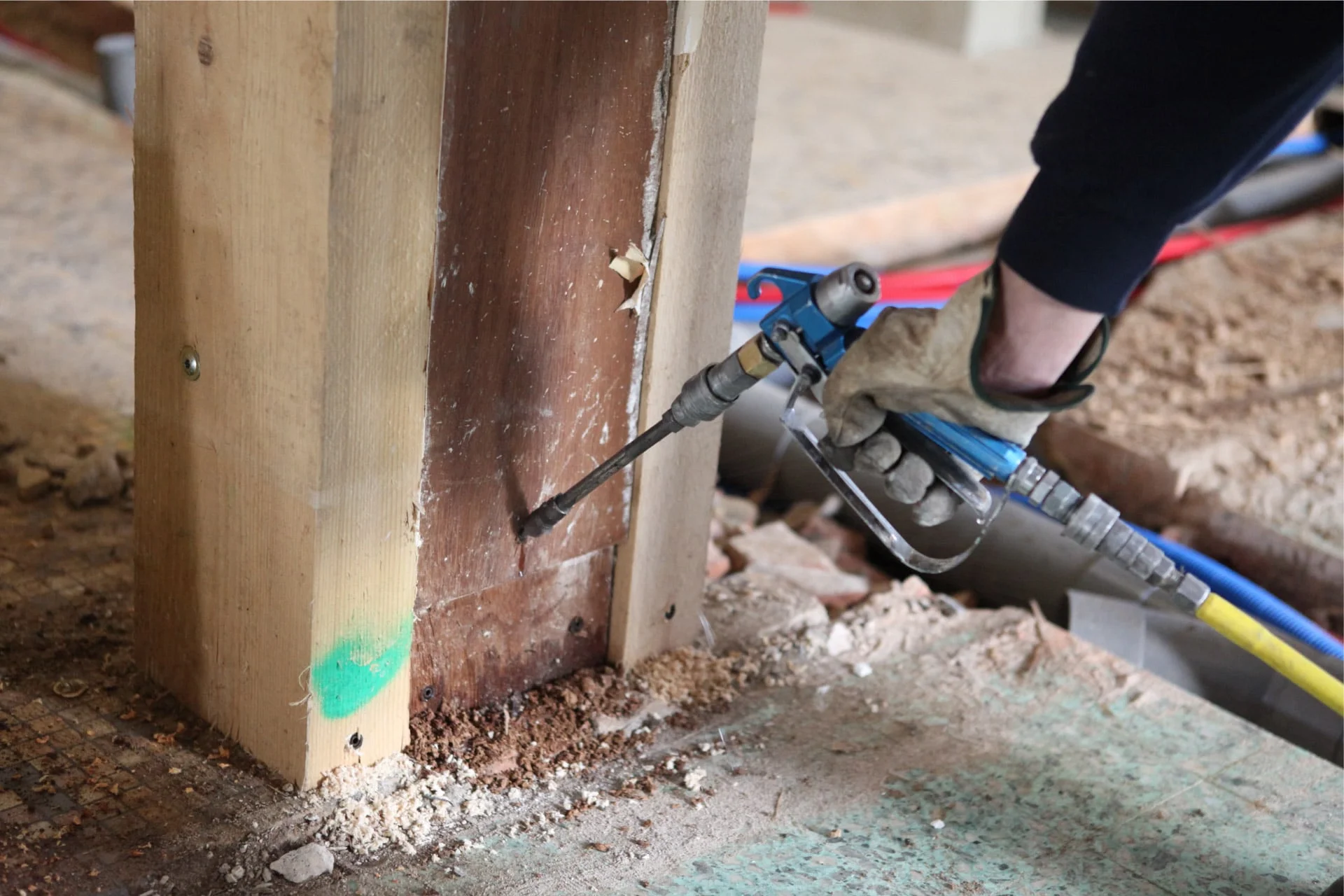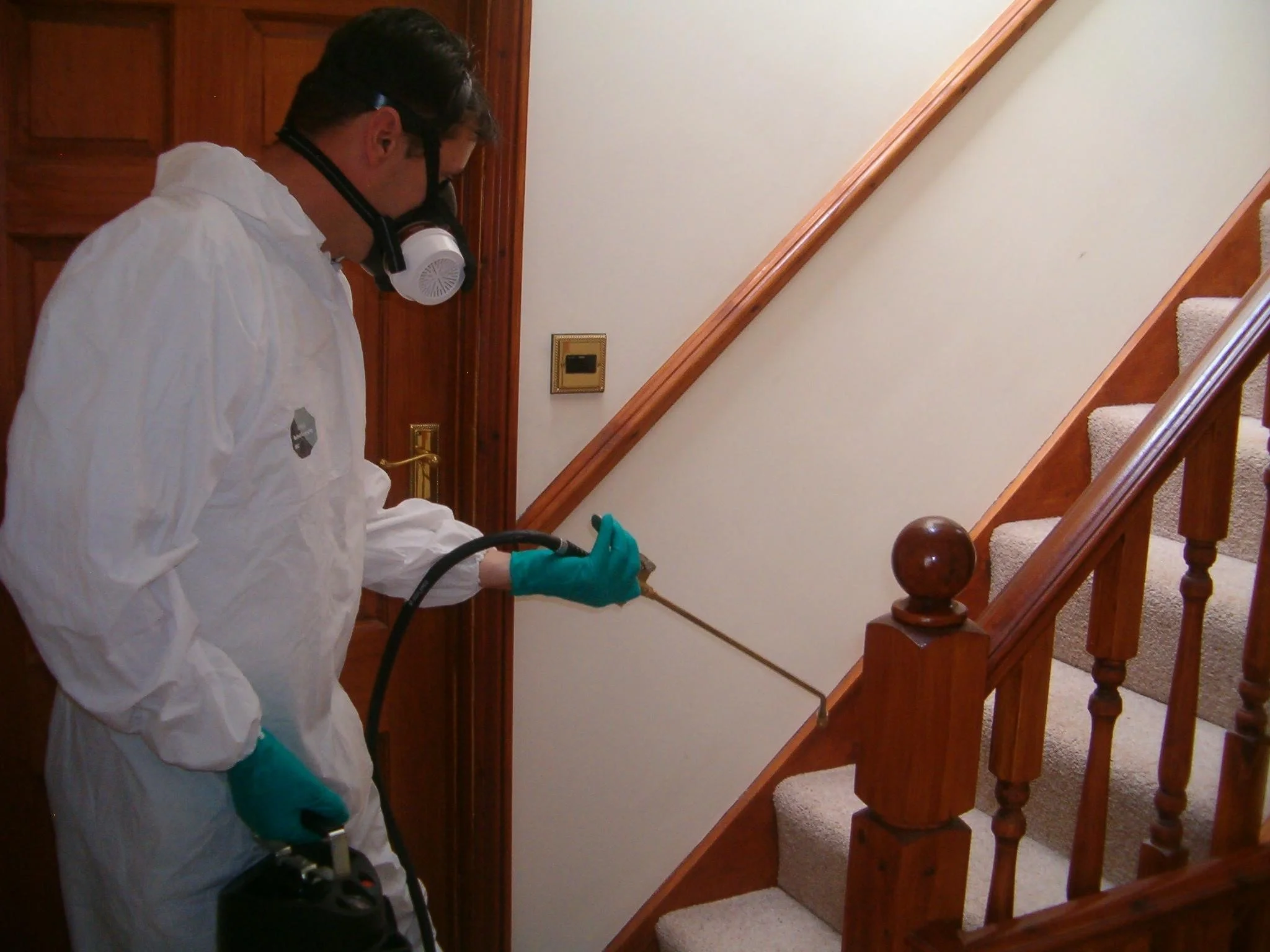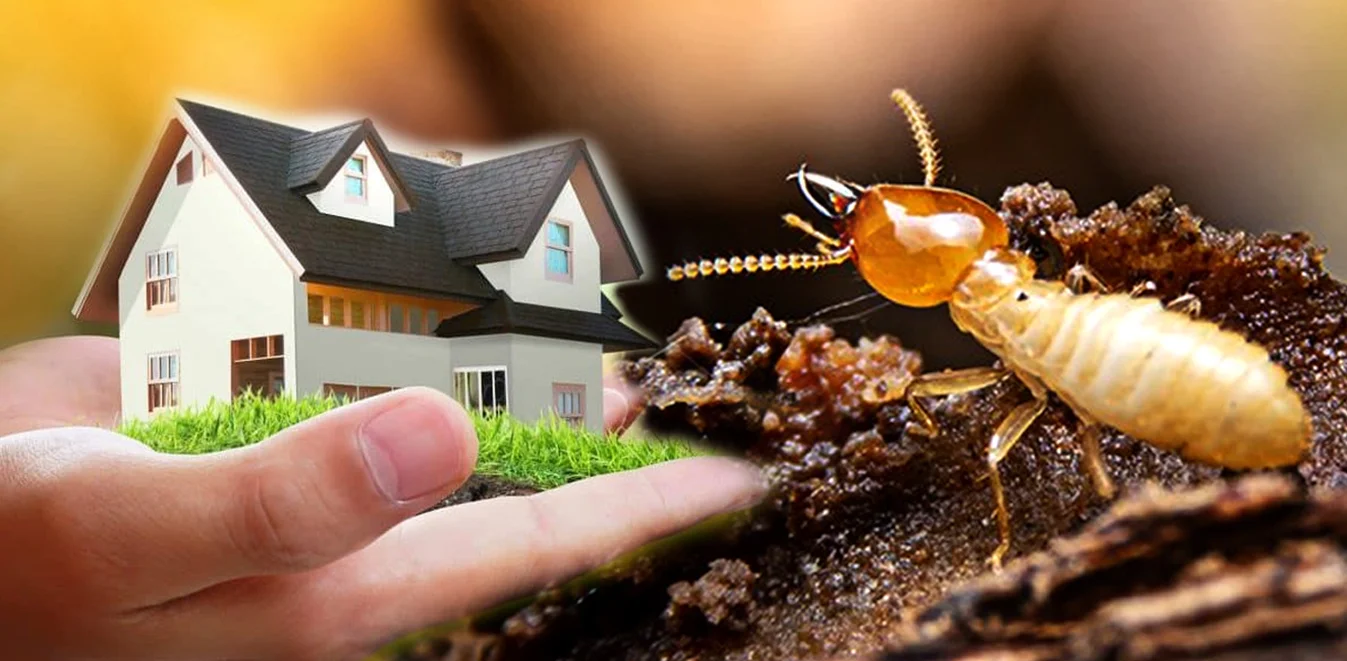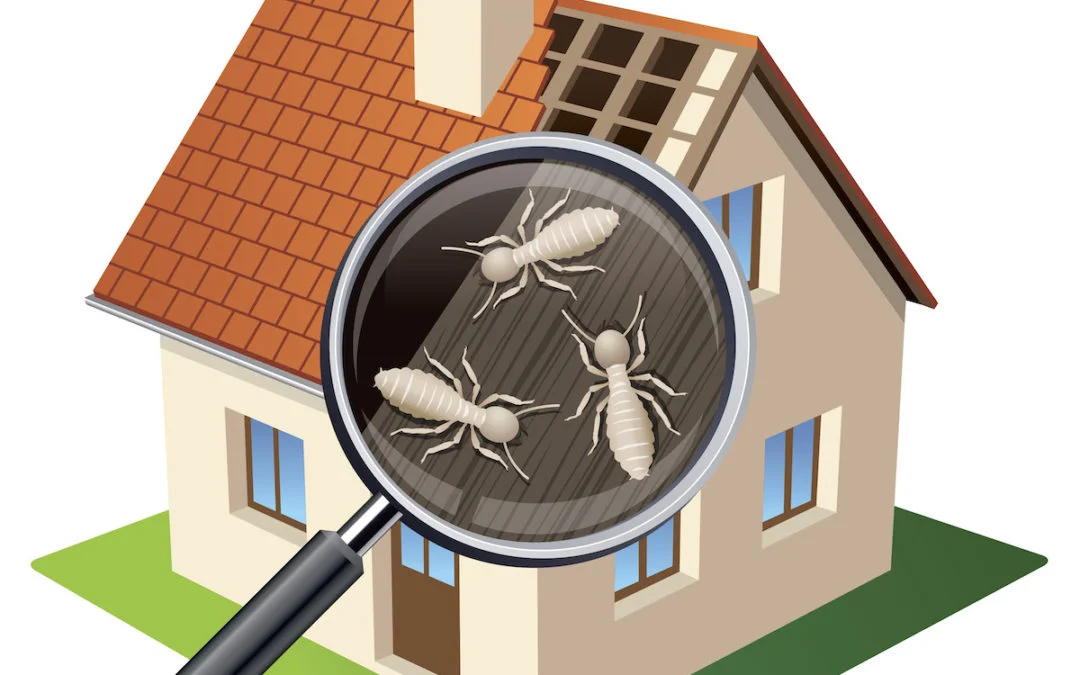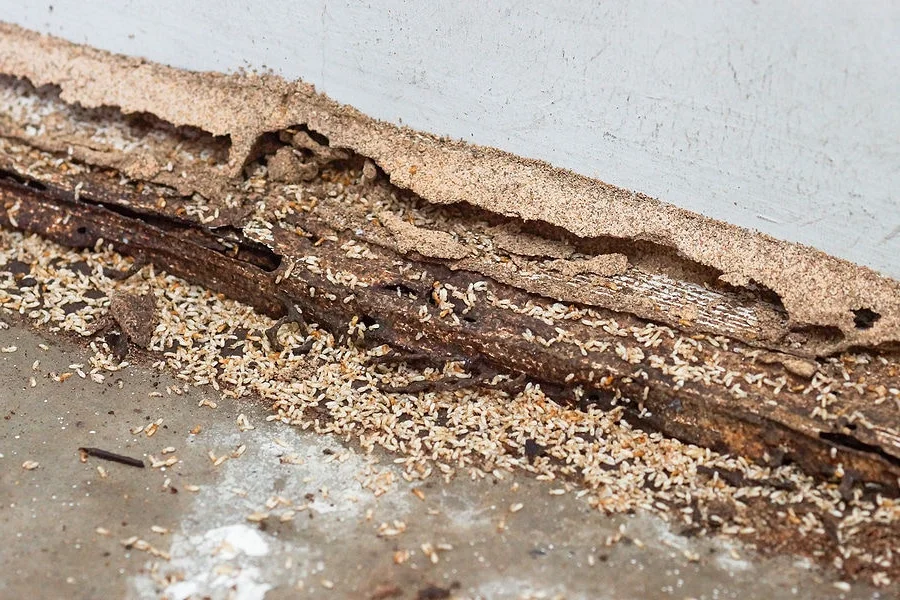Termites are among the most destructive pests homeowners can face, causing an estimated $5 billion in damage annually across the United States. These silent destroyers work continuously, often remaining hidden within walls, floors, and foundations until significant structural damage has occurred. At PestControl100, we believe that understanding these wood-destroying insects is the first step toward effective protection.
This comprehensive guide provides detailed information about termite identification, behavior patterns, warning signs, and effective control methods. Whether you suspect an active infestation or want to prevent future termite problems, this resource will help you understand the threat these persistent pests pose to your property and how professional termite management can safeguard your investment.
Concerned about termites in your property? Our termite control experts can provide a thorough inspection, accurate identification, and effective treatment solutions.
Schedule your free termite inspection today!
Common Termite Species
Several termite species threaten structures across the United States, each with distinct characteristics, behaviors, and control challenges:
Subterranean Termites
Characteristic mud tubes built by subterranean termites
Subterranean termites are the most common and destructive termite species in the United States, causing approximately 95% of all termite damage nationwide.
Key Characteristics:
- Appearance: Cream-colored workers with soft bodies; soldiers with large heads and mandibles; winged reproductives (swarmers) with straight antennae and equal-length wings
- Colony Size: Mature colonies can contain 1-2 million termites
- Habitat: Live primarily in soil, building underground tunnels to reach wood
- Distinctive Feature: Create mud tubes to maintain moisture and protect workers while traveling
- Damage Pattern: Consume wood along the grain, leaving mud in damaged areas
Eastern, Western, and desert subterranean termites are regional variants of this species, with slightly different behaviors and treatment requirements.
Formosan Termites
Extensive wood damage from Formosan termite infestation
Often called "super termites," Formosan termites are an aggressive subterranean species that pose an especially serious threat in southern states.
Key Characteristics:
- Appearance: Similar to other subterranean termites but slightly yellowish-brown; swarmers with dense hairs on wings
- Colony Size: Enormous colonies with up to 10 million individuals
- Habitat: Primarily subterranean but can establish aerial colonies without ground contact if moisture is available
- Distinctive Feature: Construct large carton nests of chewed wood and soil within walls and other voids
- Damage Pattern: Extremely aggressive foraging, consuming wood at a much faster rate than native subterranean species
Formosan termites require specialized treatment approaches due to their aggressive nature and ability to form secondary colonies without soil contact.
Drywood Termites
Unlike subterranean species, drywood termites infest dry, sound wood with no soil contact, commonly attacking structural lumber, furniture, and hardwood floors.
Key Characteristics:
- Appearance: Creamy white to light brown workers; soldiers with large brownish heads; swarmers larger than subterranean species
- Colony Size: Much smaller than subterranean termites, typically a few thousand members
- Habitat: Live entirely within the wood they infest, requiring no soil contact
- Distinctive Feature: Produce distinctive hexagonal fecal pellets (frass) that they push out of tiny kick-out holes
- Damage Pattern: Create large, clean chambers connected by tunnels within wood
Drywood termites are particularly common in coastal and southern states but can be transported to any region in infested furniture or lumber.
Drywood termite damage with characteristic frass (fecal pellets)
Dampwood Termites
As their name suggests, dampwood termites require higher moisture content in wood and typically attack decaying or water-damaged wood structures.
-
Appearance: Largest termite species in the U.S.; soldiers have large heads with well-developed mandibles
-
Colony Size: Relatively small colonies compared to other species
-
Habitat: Nest directly in damp or decaying wood with no soil contact
-
Distinctive Feature: Do not create mud tubes; fecal matter used to plug tunnels
-
Damage Pattern: Smooth, clean galleries running with the grain
While dampwood termites cause less structural damage than other species, their presence often indicates moisture problems that need addressing.
Regional Termite Distribution
Termite species vary by region, with subterranean termites found nationwide, Formosan termites primarily in southern states, drywood termites in southern and coastal areas, and dampwood termites mostly in Pacific Northwest and coastal regions. Your local PestControl100 specialist can identify the specific termite species in your area and recommend appropriate protection strategies.
Termite Life Cycle & Biology
Understanding the termite life cycle and biology helps explain their persistent nature and why professional management is essential:
Different termite castes: workers, soldiers, and reproductives
Termite Colony Structure
Termites are social insects that live in highly organized colonies with different castes performing specialized functions:
- Queen and King: Primary reproductives responsible for colony reproduction
- Secondary Reproductives: Develop when needed to increase colony growth
- Workers: Pale, wingless insects that perform most colony tasks including feeding, building, and caring for young
- Soldiers: Defensive caste with large heads and mandibles that protect the colony
- Swarmers (Alates): Winged reproductives that emerge to start new colonies
This specialized structure allows termite colonies to efficiently exploit wood resources and survive for decades if undisturbed.
Reproduction and Colony Formation
The termite life cycle begins with a termite swarm when conditions are right:
- Swarming: Mature colonies produce winged reproductives (alates) that emerge in a coordinated flight to find mates and establish new colonies.
- Pairing: After a brief flight, reproductives shed their wings, pair up, and seek suitable locations to establish a new colony.
- Chamber Creation: The new king and queen create a small chamber in soil or wood to begin their colony.
- Initial Development: The queen lays her first eggs, which develop into workers that begin colony expansion.
- Colony Growth: As the colony develops, different castes form and the colony expands its foraging range.
- Maturity: After several years, the colony reaches maturity and begins producing its own swarmers to repeat the cycle.
Most termite swarms occur in spring and early summer, often after rain when humidity is high. The timing and conditions for swarms vary by species and region.
Feeding Habits and Behavior
Termites' destructive potential stems from their unique feeding capabilities:
-
Cellulose Digestion: Termites can digest cellulose in wood thanks to specialized gut microorganisms
-
Continuous Feeding: Worker termites feed 24/7, never sleeping and constantly consuming wood
-
Cryptobiotic Nature: Termites actively avoid light and exposure, remaining hidden within structures
-
Pheromone Communication: Use chemical signals to coordinate foraging and alert the colony to food sources
-
Moisture Requirements: Most species need specific moisture levels to survive, which influences their behavior
These behaviors explain why termites often remain undetected until significant damage has occurred, highlighting the importance of regular professional inspections.
Don't wait until termites cause costly damage! Our termite inspection services can detect early signs of activity before severe structural damage occurs.
Contact us today to protect your property!
Warning Signs of Termite Activity
Identifying termite activity early is crucial for minimizing damage. Watch for these telltale signs that may indicate a termite infestation:
Mud tubes on foundation indicating subterranean termite activity
Visual Indicators
- Mud Tubes: Pencil-width tunnels made of soil and wood running along foundations, walls, or other surfaces (subterranean termites)
- Discarded Wings: Piles of small, translucent wings near windowsills, doors, or light fixtures after termite swarms
- Frass (Drywood Termite Droppings): Small, hexagonal pellets that resemble sawdust or coffee grounds, often found in small piles
- Swarmers: Flying termites emerging from walls, floors, or foundations, often mistaken for flying ants
- Termite Bodies: Dead termites near windows, doors, or light fixtures
Structural Indicators
Termites often cause distinctive damage patterns to building materials:
-
Hollow-Sounding Wood: Wood structures that sound empty when tapped, indicating termites have consumed the interior
-
Sagging Floors or Ceilings: Structural components that have been weakened by termite feeding
-
Bubbling or Uneven Paint: Paint surfaces that appear distorted due to moisture from termite activity
-
Maze-Like Patterns: Visible tunneling patterns in exposed wood when surfaces are broken
-
Tight-Fitting Doors or Windows: Frames that stick due to warping from termite damage and moisture
Behavioral Indicators
Some signs of termite activity involve movement or sounds:
-
Clicking Sounds: Faint tapping or clicking noises from within walls as soldier termites bang their heads against tunnels to signal danger
-
Swarming Behavior: Sudden appearance of flying termites, often after rain or temperature increases
-
Visible Movement: Workers or soldiers visible when infested wood is disturbed
High-Risk Conditions
These conditions don't indicate current termite activity but create favorable environments for infestations:
- Wood-to-Soil Contact: Structural wood touching soil, providing direct termite access
- Excess Moisture: Water leaks, poor drainage, or excessive humidity near foundations
- Cracks in Foundation: Small fissures that allow subterranean termites to enter
- Cellulose Debris: Woodpiles, lumber, or debris near the foundation
- Inadequate Ventilation: Poorly ventilated crawl spaces or attics that retain moisture
Addressing these conditions as part of a termite prevention strategy can significantly reduce your property's vulnerability to infestations.
Advanced termite damage to structural beam requiring repair
Professional Inspection Advantage
While these warning signs can help homeowners spot potential termite problems, many infestations remain hidden within walls, floors, or foundations. Professional termite inspectors use specialized tools and techniques to detect activity in areas not visible during casual observation, often catching problems before significant damage occurs.
Understanding Termite Damage
Termite damage can range from minor cosmetic issues to severe structural compromise. Understanding the extent and progression of termite damage helps assess the urgency of treatment:
How Termites Damage Structures
Cross-section of termite-damaged wood showing feeding patterns
Termites destroy wood from the inside out through their feeding patterns:
- Subterranean Termites: Typically consume wood along the grain, leaving a honeycomb pattern and filling empty spaces with soil and excrement
- Drywood Termites: Create large, clean chambers connected by tunnels across the grain, often leaving only a thin veneer of wood intact
- Formosan Termites: Feed extremely aggressively, leaving multiple, layered feeding paths and tunnels
- Dampwood Termites: Create large, open galleries as they consume damp, decaying wood
Termites preferentially attack softer spring growth wood while leaving harder summer growth, creating a distinctive layered appearance in damaged wood.
Common Damage Locations
Termites tend to target specific areas of structures based on their species and behavior:
-
Foundation Components: Sill plates, support posts, and floor joists near soil
-
Wall Structures: Studs, sheathing, and interior wall surfaces, especially near moisture sources
-
Flooring: Subflooring and hardwood floors, particularly in areas with moisture issues
-
Window and Door Frames: Wood components that may be exposed to moisture
-
Attic Elements: Roof supports, rafters, and stored wood items (particularly for drywood termites)
Damage often starts in less visible areas like crawl spaces, inside walls, or behind baseboards, allowing infestations to progress undetected.
Damage Progression and Timeline
The rate at which termites damage structures depends on several factors:
-
Colony Size: Larger, mature colonies cause damage more quickly than new ones
-
Termite Species: Formosan colonies can cause significant damage in months, while other species may take years
-
Environmental Conditions: Optimal temperature and moisture accelerate feeding and colony growth
-
Wood Type and Condition: Softer woods and those with higher moisture content are damaged faster
-
Number of Colonies: Multiple colonies attacking a structure increase damage rate substantially
A typical subterranean termite colony might consume about a pound of wood per day, potentially causing noticeable structural damage within 1-3 years if left untreated.
Insurance Considerations
Most homeowner's insurance policies do not cover termite damage because it's considered preventable through proper maintenance and inspections. This makes proactive termite protection particularly important for protecting your investment.
Professional Termite Control Methods
Effective termite management requires professional intervention using specialized techniques, equipment, and products. PestControl100 offers comprehensive termite control solutions tailored to your specific situation:
Liquid Termite Barriers
Professional application of liquid termite barrier
Liquid termite barriers create a protective zone in the soil around foundations to block and eliminate subterranean termites:
How They Work:
- Termiticides are applied to soil around and beneath the structure
- Creates a continuous treated zone that termites cannot detect
- Termites either die upon contact or transfer the treatment to other colony members
- Modern formulations provide long-lasting protection (5-10+ years)
Best For:
- Active subterranean termite infestations
- Preventive treatment for high-risk properties
- Comprehensive protection against future invasions
Our technicians use specialized equipment and precise application techniques to ensure complete coverage with minimal disruption to your property.
Termite Baiting Systems
Baiting systems use termites' own foraging behavior to target the entire colony, including the queen:
How They Work:
- Stations containing monitoring wood or bait are installed around the property perimeter
- Foraging termites discover the stations and recruit others to the food source
- Once activity is detected, active bait is installed that termites carry back to the colony
- The slow-acting bait affects the colony's ability to molt and reproduce
- Regular monitoring ensures ongoing protection
Best For:
- Properties where trenching for liquid treatments is difficult
- Homes with wells, cisterns, or environmental considerations
- Customers preferring minimal chemical application
- Long-term monitoring and protection programs
Installation of termite monitoring and baiting station
Wood Treatments
Direct wood treatment methods provide targeted protection for accessible wood or localized infestations:
-
Borate Treatments: Applied to exposed wood surfaces to prevent or address termite activity
-
Wood Injection: Targeted application of termiticides directly into infested wood
-
Foam Applications: Expanding foam treatments that reach voids and cavities where termites hide
-
Dust Applications: Specialized termiticide dusts for treating galleries and tunnels
These methods are often used in combination with barrier or baiting systems for comprehensive protection, or as stand-alone treatments for isolated drywood termite issues.
Fumigation
Structure tented for whole-house fumigation treatment
For severe drywood termite infestations, whole-structure fumigation provides comprehensive elimination:
How It Works:
- The entire structure is covered with tarps or tents
- Fumigant gas is introduced that penetrates all wood throughout the structure
- The gas eliminates all termites, including those in inaccessible areas
- After the prescribed exposure period, the structure is ventilated and certified safe for re-entry
Best For:
- Widespread drywood termite infestations
- Structures where termites have infested multiple, hard-to-reach areas
- Situations where other treatment methods have failed
Fumigation requires temporary relocation (typically 2-3 days) but provides 100% elimination of all termites within the structure.
Pre-Construction Treatments
For new construction, pre-treatment during the building process provides the most effective long-term protection:
-
Soil Pre-Treatment: Application of termiticides to soil before concrete slabs are poured
-
Foundation Barrier: Creation of treated zones around foundation elements
-
Physical Barriers: Installation of termite shields, barriers, or stainless steel mesh
-
Treated Building Materials: Use of termite-resistant or pre-treated wood products
These preventive measures create comprehensive protection from the ground up, often at a fraction of the cost of treating an established infestation.
Protect your property from devastating termite damage! Our termite control experts provide customized protection plans with industry-leading warranties.
Contact us now for your free inspection and consultation!
Termite Prevention Tips
While professional termite control provides the most reliable protection, these preventive measures can reduce your property's vulnerability to termite infestations:
Inspection of foundation area for termite vulnerabilities
Moisture Control
- Fix Leaky Pipes and Faucets: Repair plumbing leaks promptly to eliminate water sources
- Maintain Proper Drainage: Ensure gutters and downspouts direct water away from the foundation
- Correct Grading Issues: Address landscape grading to prevent water accumulation near the structure
- Use Dehumidifiers: Control humidity in crawl spaces, basements, and other damp areas
- Ensure Adequate Ventilation: Properly ventilate crawl spaces, attics, and other enclosed areas
Controlling moisture is particularly important for preventing subterranean and dampwood termites, which require higher humidity levels to survive.
Eliminate Wood-to-Soil Contact
Direct contact between wood and soil provides an easy entry point for termites:
-
Maintain 6-inch clearance between soil and structural wood components
-
Use concrete footings or bases for wooden posts, stairs, and similar structures
-
Replace wooden landscape ties with non-cellulose alternatives
-
Elevate wooden decks and porches on concrete supports
-
Remove wood debris from around the foundation, including form boards
Landscape Management
Your yard maintenance practices can either attract or deter termites:
-
Store firewood away from the house and elevated off the ground
-
Keep mulch at least 6 inches from the foundation and avoid excessive accumulation
-
Remove dead trees, stumps, and roots from your property
-
Trim shrubs and vegetation away from the foundation to improve air circulation
-
Consider termite-resistant landscaping materials like rock or gravel near the foundation
Structural Maintenance
Regular home maintenance helps minimize termite entry points and conducive conditions:
- Seal Cracks and Gaps: Address foundation cracks, utility entrances, and similar access points
- Repair Damaged Roof Tiles and Eaves: Fix damage that could allow moisture into wooden structures
- Maintain Exterior Paint and Sealants: Keep wooden surfaces properly sealed
- Install and Maintain Proper Ventilation: Ensure crawl spaces and attics have adequate airflow
- Inspect and Repair Basement Waterproofing: Address moisture issues below grade
These maintenance practices not only help prevent termite issues but also protect your home from other pests and moisture-related problems.
Sealing foundation cracks to eliminate termite entry points
Regular Professional Inspections
Perhaps the most important preventive measure is scheduling regular termite inspections:
-
Annual professional inspections to detect early signs of activity
-
Documentation of inspection findings for real estate and insurance purposes
-
Expert assessment of your property's specific risk factors
-
Early detection of termite activity before significant damage occurs
-
Professional recommendation of appropriate preventive measures
Professional inspections provide peace of mind and can save thousands in repair costs by identifying problems early.
Prevention vs. Treatment Costs
Preventive termite protection typically costs a fraction of what remediation and repairs for termite damage would require. With the average termite damage repair costing over $8,000, investing in preventive measures and regular inspections is a wise financial decision for any property owner.
Frequently Asked Questions About Termites
How can I tell the difference between termites and flying ants?
Termite swarmers (winged reproductive termites) and flying ants are frequently confused, but they have several distinct physical differences. Termites have straight antennae, uniform waists without a pinched middle section, and two pairs of wings of equal length. Flying ants have bent or elbowed antennae, distinctly pinched "wasp-like" waists, and two pairs of wings where the front wings are notably longer than the back wings. Additionally, termite wings are typically twice as long as their bodies and break off easily after swarming, while ant wings are more proportional to their bodies. The timing and behavior of swarms can also provide clues—termites often swarm after rain during warm weather and are strongly attracted to light, while ant swarms may occur under more varied conditions. If you've found winged insects in your home and are unsure which they are, collecting a sample in a sealed container for professional identification or scheduling an inspection is the best approach to determine if you have termite activity.
How long does it take termites to cause significant damage?
The timeline for termites to cause significant structural damage varies considerably based on several factors, including the termite species, colony size, environmental conditions, and the structure's wood type. A mature subterranean termite colony with 60,000+ workers can consume about one-fifth of an ounce of wood daily, which could damage a 2x4 board in about 5-6 months. Formosan termites, with their larger colonies, can cause noticeable damage in as little as 3-6 months. Drywood termites work more slowly, but since they often remain undetected for longer periods, the cumulative damage can still be substantial. In most cases, noticeable structural damage takes about 1-3 years to develop with an active infestation, though some homes have withstood hidden termite activity for 7-8 years before discovery. The damage timeline also depends on how many colonies are attacking the structure and whether the infestation is continuous or seasonal. Because termites work silently within walls and foundations, significant damage often occurs before visual signs become apparent, highlighting the importance of regular professional inspections to catch activity early.
Is it possible to completely prevent termites?
While it's challenging to guarantee 100% prevention against termites in all environments, a comprehensive approach can dramatically reduce the risk of infestation and provide early detection if activity occurs. The most effective termite prevention combines professional protective treatments (like soil barriers or baiting systems) with proactive property maintenance. Professional pre-treatments during construction offer the highest level of prevention by creating complete protective barriers before the structure is even completed. For existing structures, combining regular professional inspections with moisture control, elimination of wood-to-soil contact, proper structural maintenance, and appropriate landscaping practices creates a strong defense system. Even with these measures, termites may occasionally probe for weaknesses, especially in high-pressure regions like the southeastern United States. However, with a professional prevention program in place, any activity is typically detected early, before significant damage occurs. This early detection is the key difference between prevented termites and undetected infestations that cause major structural damage. Our termite warranty programs provide additional peace of mind by covering both treatment and damage repair if termites do breach preventive measures.
Is termite treatment safe for my family and pets?
Yes, when properly applied by trained professionals, modern termite treatments are designed to be safe for families and pets. Today's termite control products and application methods have advanced significantly from decades past, with a focus on targeted application, reduced toxicity, and minimal exposure to non-target organisms. For liquid treatments, the product is applied primarily to the soil around your home's foundation or injected into specific treatment zones with minimal exposure to living areas. Baiting systems contain very small amounts of active ingredient in sealed, tamper-resistant stations placed in the ground around your property's perimeter. During the treatment process, our technicians will provide specific safety instructions based on the treatment method used, including any temporary precautions during application. Most homeowners can remain in their homes during liquid or baiting treatments, though in some cases, a brief period away during application may be recommended. For fumigation services (typically only needed for severe drywood termite infestations), a temporary relocation is required, and we provide detailed preparation and re-entry guidelines. Our technicians are extensively trained in the safe application of termite control products, following all manufacturer guidelines and regulatory requirements to ensure your family's safety while effectively protecting your home from termites.
Does homeowners insurance cover termite damage?
In most cases, standard homeowners insurance policies do not cover termite damage. Insurance companies typically classify termite damage as preventable through proper maintenance rather than as a sudden, unexpected peril (like fire or storm damage) that insurance is designed to cover. Since termite damage occurs gradually over time and can be detected and prevented through regular inspections and maintenance, it falls under the homeowner's responsibility rather than the insurer's. The few exceptions to this rule are rare and usually involve specific circumstances where termite damage was directly caused by a covered peril (such as a pipe burst leading to moisture that attracted termites) or cases where specialty insurance or endorsements were specifically purchased for wood-destroying organisms. Due to this lack of coverage, proactive termite protection becomes even more important as a financial safeguard. Many homeowners find value in termite warranty programs offered by pest control companies, which can provide coverage for treatment costs and sometimes even repair costs if termites return after treatment. These warranty programs, combined with regular professional inspections, offer protection that insurance typically doesn't provide. Always review your specific insurance policy to understand your coverage, and consider consulting with your agent about any available endorsements for termite protection if you're in a high-risk area.
What Our Termite Control Customers Say
"When we discovered termites during a kitchen renovation, we were devastated. PestControl100 responded quickly, conducted a thorough inspection, and implemented a comprehensive treatment plan. Their technician explained everything clearly and helped us understand our options. A year later, we're still termite-free and have them conduct annual inspections for peace of mind."
- Michael and Susan L., Homeowners
★★★★★
"As a real estate agent, I recommend PestControl100 to all my clients. Their termite inspections are thorough, their reports are detailed and clear, and they always complete them on time for closing. Several of my clients have used their termite control services after moving in and have been equally impressed."
- Jennifer R., Real Estate Professional
★★★★★
"We chose PestControl100 for pre-construction termite treatment on our new home. They coordinated perfectly with our builder, provided all the documentation we needed for our warranty, and gave us great peace of mind knowing our investment is protected from the ground up."
- Thomas W., New Home Owner
★★★★★
Don't wait until termites cause thousands in damage to your property! Our proven
termite control solutions provide effective protection and peace of mind –
contact us today for your free termite inspection!


